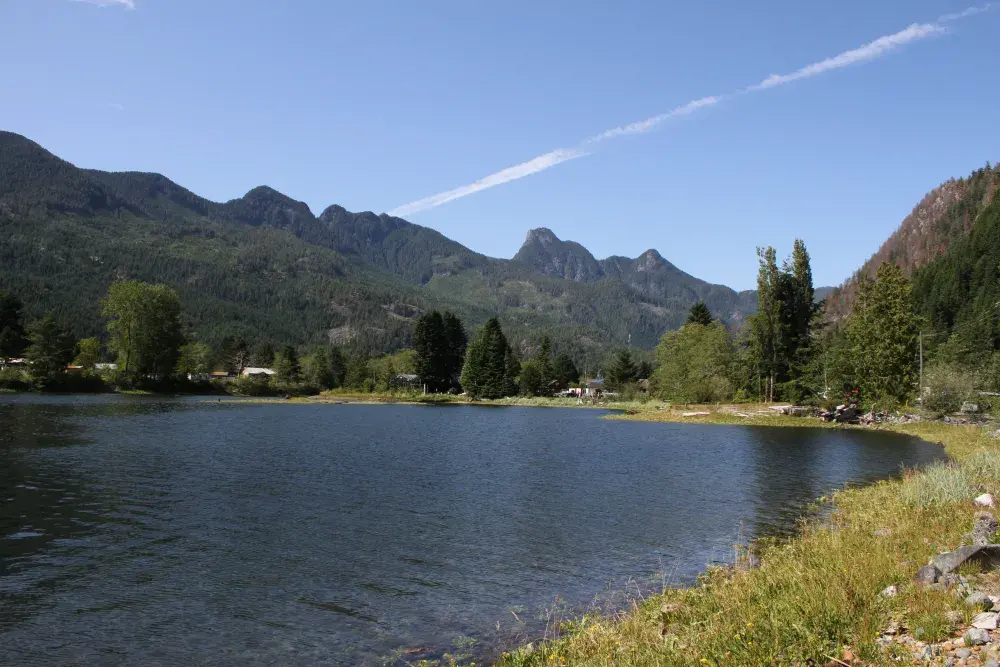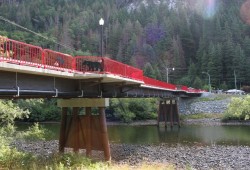A major change is coming for B.C.’s system of granting mining rights, but the duty to consult First Nations before a claim is granted will not be in place for another year and a half, with current stakes remaining in place.
This decision came from the B.C. Supreme Court, after the Ehattesaht and Gitxaala First Nations asserted that the province’s current regime of granting mineral claims goes against their inherent rights. In his Sept. 26 ruling, Justice Alan Ross found that B.C.’s Mineral Tenure Act breaches the obligation under Canada’s Constitution Act to consult with First Nations over development in their territories. The current system adversely impacts “areas of significant cultural and spiritual importance,” stated the decision.
Now First Nations, the province and the mining industry have a year and a half to develop a new process.
“The goal is to develop a mineral tenure system that recognizes the rights of B.C.’s Indigenous people,” wrote Ross in his decision. “My hope is that goal can be achieved in the 18 months I have set aside for that purpose.”
“I really believe that it is a good decision,” said Ehattesaht Chief Councillor Simon John, who hopes that the court’s direction will lead to the First Nation having a greater role in the development and management of natural resources in its territory. “There’s a lot of practice in the area that needs to be more defined. This presents opportunity to actually engage in that process.”
B.C.’s system of granting mineral rights remains the result of a process that started in 1859, when British Columbia was a colony amid the rapidly expanding influence of European settlement. Claims were issued by the colony to “free miners”, who could explore their stake in hopes of hitting upon lucrative minerals.
Now an online system grants a mineral claim to any Canadian over 18 for a fee of $25, certifying them as a free miner under B.C.’s Mineral Tenure Act. Cells can be selected by free miners from a map of British Columbia at $1.75 a hectare, entitling them to any minerals therein.
The Ehattesaht’s concerns mounted in 2018, a year when the First Nation alleges that Forest Crystals was overstepping its permits near Zeballos. The company did not heed the First Nation’s requests to cease this activity, which led the Mineral Tenure Branch to issuing a cease-and-desist letter to the company.
Mineral exploration has continued under the nose of the First Nation, as 32 new claims were registered from January 2020 to April 2022, according to court evidence. The Ehattesaht petitioned the court to cancel these recent claims, as the system under which they were issued contravenes the First Nation’s responsibility of territorial stewardship.
John hopes that the change in how mineral claims are granted will give more consideration to the Nuu-chah-nulth concept of hišuk ma c̕awak, everything is one.
“From the rugged mountains out to the deep ocean, there’s life that’s intertwined,” he said.
“The Ehattesaht have resided in their traditional territory for millennia,” stated the court decision. “The people, land, water, air, plants and living creatures therein constitute an inseparable and interdependent whole known as the ‘Ha-Hahoulthee’. This term expresses the spiritual and cultural connection to the land that informs the legal and political systems as well as concepts of ownership and stewardship.”
The Village of Zeballos was founded by gold mining in the 1930s, but the Ehattesaht describe an interest in the region’s minerals that predate European settlement. A report conducted for the trial references the diaries of Captain Cook in 1778, who “collected many artifacts from the Ehattesaht, including a carved quartz crystal,” stated the court decision.
“The oversight of the territory includes spiritual practices, which include reverence for crystals that are found within the territory,” continued Ross.
After the Second World War, industrial-scale mining in the Zeballos area expanded to include large underground mines extracting iron ore and gold. Much of this activity ceased in the late 1960s when more stringent environmental regulations came into place, but the aftermath remained.
“Ehattesaht territory has a number of long abandoned workings which include tailing ponds, tailing mounds and exposed mine shafts that produce run off water,” stated a press release from the First Nation.
“We have a great big aquafer in our valley that needs more attention,” noted John. “There’s a lot of clean up in the valley that needs to be done.”
Meanwhile, the provincial government has called the assertion of the Gitxaala and Ehattesaht “an attack on the whole system of mineral claims acquisition,” according to court records.
“The province says that if I grant a declaration that the province was required to consult with the petitioners about mineral claims within their territories, then the practical result would be an obligation that it (currently) lacks the capacity to fulfill,” wrote Ross.
A central consideration in the ruling is the Declaration on the Rights of Indigenous Peoples Act. Passed by the province in 2019, this legislation tasks the government to align its laws with the United Nations Declaration on the Rights of Indigenous Peoples, but courts have yet to use DRIPA, or its guiding UN declaration, as a determining legal factor.
“It remains to be seen whether the passage of UNDRIP legislation is simply vacuous political bromide or whether it heralds a substantive change in the common law respecting Aboriginal rights, including Aboriginal title,” wrote Justice Nigel Kent in a B.C. Supreme Court ruling from last year.
In his recent decision Ross determined that the province’s legislation from 2019 “does not implement UNDRIP into the domestic law of B.C.” nor “create justiciable rights”. Instead, DRIPA works as an interpretive aid, setting out a commitment to reconciliation with First Nations - but not the establishment of rights, determined the judge.
In the court records the Ehattesaht First Nation identified 94,336 hectares of territory, 10 per cent of which is affected by existing mineral claims, which totaled 100 as of May 2023. The ruling determined that all of these claims will remain in place.



